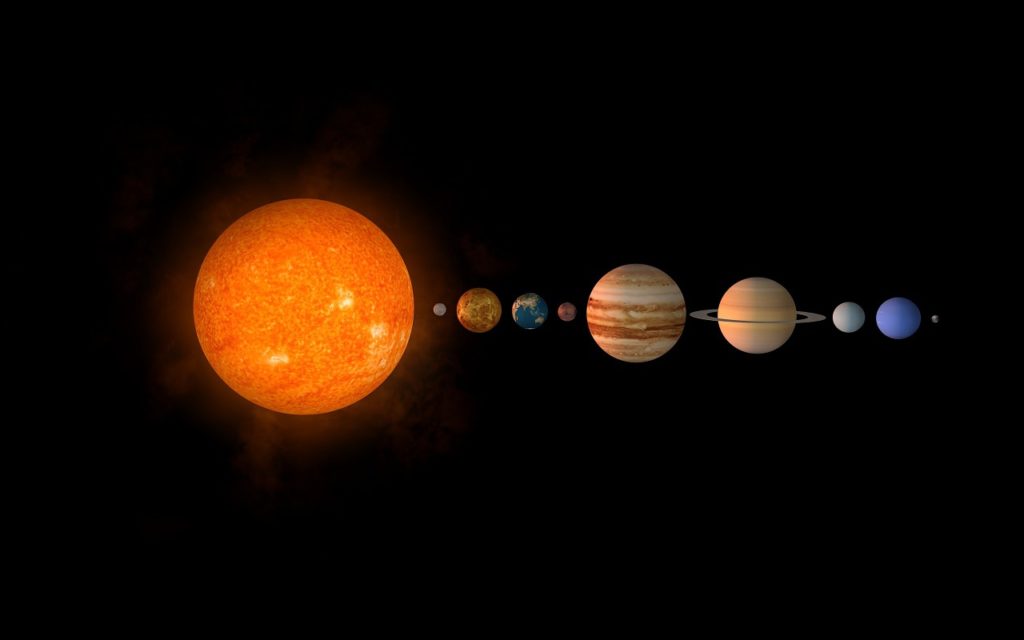Why is the Solar System flat?
by Scott Dutfield · 24/09/2019

How a matter-filled cloud turned into a flat, planetary system
To find out why our Solar System is flat, we must first uncover its origins. Our Solar System formed from a huge, nebulous cloud of gas and dust, roughly 4.6 billion years ago. This shapeless, spinning cloud contained all of the matter that makes up the Sun, planets and other objects in the Solar System.
Although it seems unlikely that something measuring light years across would ever become flat, there is a reason for this bizarre phenomenon. When particles in a cloud are randomly crashing into each other their individual paths are impossible to predict, yet when all the particles are considered collectively, they have a total angular momentum (a net amount of rotation). Therefore, the cloud as a whole spins about its centre of mass in one direction.
As the particles collided they shot off randomly, but the up and down collisions worked to cancel each other out. Although they lost energy individually, the energy was not lost from the overall system. This is due to a rule known as the conservation of angular momentum – the total amount of spinning in any isolated system, such as the Solar System, will always remain constant. This allowed the cloud to flatten over time, losing its height and becoming the roughly two-dimensional disc we see today.
This article was originally published in How It Works issue 82 written by Philip Watts
For more science and technology articles, pick up the latest copy of How It Works from all good retailers or from our website now. If you have a tablet or smartphone, you can also download the digital version onto your iOS or Android device. To make sure you never miss an issue of How It Works magazine, subscribe today!






